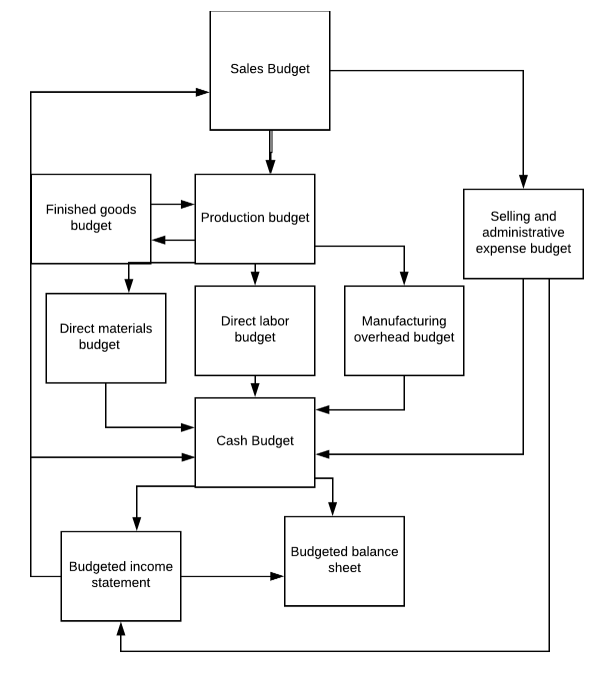CPAs and similar organizations follow the best practices in the industry. They adhere to most standard procedures to remain high-quality service providers. Five years in, the firm has set up an office and offshore infrastructure and is managing staff fluctuations on its own. The firm initially switched to offshoring project by project and then decided to become the employer of record for its India staff.
Download our Sample Ecommerce Financial Reports
Diverse, global teams can enable CPA firms to not only overcome a current talent shortage but also create a more dynamic, innovative, and resilient profession for the future. Before committing to a specific outsourcing company, be sure that they will provide monthly reports that provide detailed information in the following categories. Outsourcing companies are also beginning to focus more on vendor and supplier management, as well as provide more in-depth analytics to their customers. However, should your vendor change your payment terms from Net 30 to Net 15 as a result of late payments, you would effectively reduce your cash flow by fifteen days. However, if you wait until it’s due to pay the invoice, your available cash flow increases, allowing you to pay bills that are due earlier or invest the extra funds in the business. If you pay an invoice well before it’s due, you’ll be decreasing your cash flow.
Reduces Common Processing Errors
You can hire local bookkeepers or a bookkeeping team located near your company. The main benefits of such an approach include meeting with the bookkeeper face to face, using physical records, and relying less on online payment and banking systems. For example, offshore employees doing tax work gather and organize data from clients’ documents, begin the initial preparation, and perform a self-review. They provide the onshore manager with a drafted email with missing items and clarifying items to confirm with the client. The onshore manager works with the client and completes the tax return preparation. Tasks are tracked in workflow management software to ensure turnaround is timely and fluid.
- Outsourced bookkeeping streamlines the financial management process and is much more efficient than traditional in-house bookkeeping.
- FreshBooks is an accounting software for small businesses, freelancers, self-employed professionals, and businesses with employees.
- Here’s a full breakdown of the differences between Bench and DIY software.
When Do Businesses Outsource Their Accounting?
For small nonprofits that are just looking for help filling out Form 990-EZ or 990-N, File 990 is an effective solution. While this isn’t a full accounting firm, it’ll help you take care of this one key need and maintain your 501(c)(3) status for another year. According to a report, 40% of small companies rank tax preparation and bookkeeping as the worst part of running a business. On top of that, companies outsourced bookkeeping spend over $82,000 per year on a full-time accountant.
What Are the Benefits of Nonprofit Organizations?
- But by looking at outsourcing more closely, you’ll understand why you need to outsource your bookkeeping and why it’s a good investment.
- When hunting for bookkeeping firms, go for those who give immediate and secure access to financial reports.
- Outsourcing offers professional expertise without the cost of a full-time hire, freeing up time for growth and customer relationships.
- You’ll have to verify the details with your chosen outsourced bookkeeping service.
- Similar to Jitasa, GrowthForce will also get your organization started with QuickBooks and develop workflows to make the most of this solution.
- However, they usually offer some “assurances” that solo bookkeepers can’t.
- If you pay an invoice well before it’s due, you’ll be decreasing your cash flow.
Providers can vary from independent contractors to huge and established firms. While they have varying degrees of capacities, costs are still a thing to think about. This is especially helpful for business owners who often take on bookkeeping themselves.
- Outsourcing financial tasks such as payroll, taxes, or financial analysis helps streamline overall financial operations.
- If you’re considering outsourced bookkeeping but aren’t quite ready to commit, we can help you make an informed decision.
- Documentaries about financial status can be much more organized and effective.
- They should be able to embrace change, understand back-office outsourcing, and have excellent communication skills.
- We have your needs covered with back bookkeeping, real-time bookkeeping, bookkeeping, and payroll services, and full-time or part-time bookkeepers, so you can get back to doing what you do best.
If you’re one of these small business owners, your reservations are valid. But by looking at outsourcing more closely, you’ll understand why you need to outsource your bookkeeping and why it’s a good investment. We have your needs covered with back bookkeeping, real-time bookkeeping, bookkeeping, and payroll services, and full-time or part-time bookkeepers, so you can get back to doing what you do best. Not only this, but we will also help you get your books up-to-date quickly and easily and ready for taxes, loans, or other transactions, for a clear picture of your business’s financial situation. These inefficiencies not only hamper accuracy but also restrict the growth potential of accounting firms.
Full-Service Outsourced Bookkeeping Services for CPA Firms
EBS Chartered Accountants also provides outsourced accounting services for both nonprofits and small businesses. Their services extend far beyond accounting and bookkeeping, though—they also offer audit assurance services, organizational setup services, and web development. This article will give you a complete rundown of outsourced bookkeeping for small businesses. We’ll teach you how to get started and what to consider when looking for a service provider.
You must establish a safe and secure data exchange method with the outside accounting firm, preferably a modern cloud-based approach. That way, the accountants can quickly pull the necessary information without wasting your time and resources. To facilitate the transfer of accounts between your company and the outside bookkeeping and/or accounting firm, keep in mind all of the below. It can be easily incorporated into your business by evaluating the needs of your business, researching providers, and establishing clear expectations.
How Do You Know If You Should Outsource Bookkeeping Services?
- They handle the day-to-day recording of financial activities, like tracking sales and expenses, and make sure every transaction is accurately entered into the company’s accounting system.
- DIY bookkeeping can seem like a cost-saving option, but it’s often time-consuming and error-prone, especially for smaller companies with limited financial expertise.
- It’s worth asking questions upfront to ensure you are aligned on expectations of their offerings before signing up.
Outsourced bookkeeping services generally fall into two main categories, which are local bookkeeping and virtual bookkeeping. The right choice depends on your business’s needs, preferences, and level of comfort with digital financial management. Outsourcing your bookkeeping also helps mitigate compliance risks, ensure data security, and reduce employee turnover, offering a comprehensive approach to financial management.
The above reasons aren’t the only signs that you should outsource your bookkeeping. In general, the sooner you start with outsourced bookkeeping, the faster you’ll see its benefits. A strong bookkeeping system is of vital importance for any company or organization. For example, AICPA & CIMA offshoring tools include a list of holidays and an offshoring vendor due diligence checklist.
Free up time
Freelance bookkeepers can be expensive, and yet the quality can drastically vary from one individual to another.






















